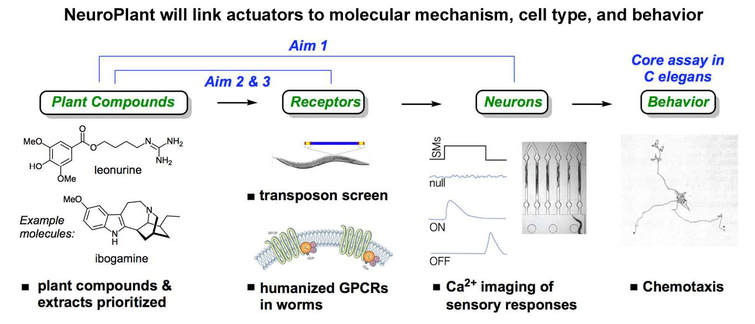A botanical armamentarium
|
A botanical armamentarium
|
|
Plants have evolved extraordinarily complex chemistry to fight predators and parasites. These metabolic pathways produce a plethora of chemicals with the potential for therapeutic use in humans. Chance exploration of plant extracts has led to some of the most powerful, selective chemical actuators of brain function, including morphine, cannabinoids, nicotine, and cocaine. Systematic screening campaigns have produced >3,000 plants with anticancer activity, and many clinical agents including taxol, topotecan, and CPT-11. We aim to remove existing barriers that prevent exploration of these molecules for research and therapeutic benefits.
|

